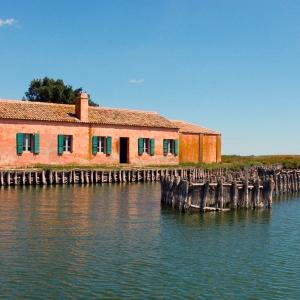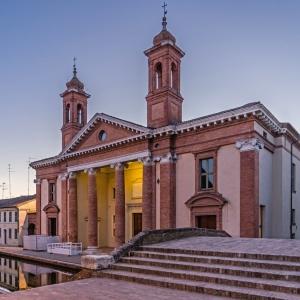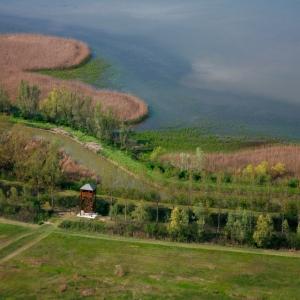SECOND TRIP ITINERARY IDEA - IN THE HEART OF THE PARK
Comacchio and Argenta; these two towns are the main focus of our second proposed trip to the Po Delta. Three days and two nights of art, nature, culture and tradition.
1° DAY: COMACCHIO HISTORICAL CENTRE
The trip starts in Comacchio, a splendid water town that has been described by many as "little Venice", thanks to its dense network of bridges and canals, which can enchant visitors and offer them a highly evocative experience. Founded on thirteen small islands and heir to the ancient town of Spina, Comacchio is a treasure trove of precious architecture and evocative views that can be admired on a beautiful walking tour. The most beautiful view can be enjoyed from the Ponte degli Sbirri: on one side the Antico Ospedale degli Infermi and on the other the 19th century Palazzo Bellini and the famous Trepponti, the monumental bridge that is the symbol of Comacchio. From the Porticato dei Cappuccini, which leads to the Sanctuary of Santa Maria in Aula Regia, you can access the Manifattura dei Marinati, a historic and ancient eel marinating factory, where it is still possible to visit the "Sala dei fuochi", with its 12 fireplaces to spit-roast eels. For archaeology enthusiasts, the Museo Delta Antico (Ancient Delta Museum) is a must. Housed in the imposing neoclassical architecture of the 18th-century Ospedale degli Infermi (Hospital of the Sick) (1771/1784), it hosts a rich heritage of archaeological finds from the territory, dating back to the earliest protohistoric periods up to the Middle Ages. A section of the museum houses the perfectly preserved precious cargo of a Roman ship dating from the Augustan period.
2° DAY: COMACCHIO VALLEYS - BOSCOFORTE
The next day we move on to the Valleys, which open up a few kilometres from the town and can also be easily reached by bicycle following a route running alongside the riverbanks. A landscape of unreal beauty, a magical kingdom rising between land and water, for many centuries of vital importance in the economy of the area and today an extraordinary natural site, visited by thousands of visitors every year. From the Bettolino di Foce, an old fishing house, there is an extraordinary excursion by motorboat to the Salina (Saltworks), the ideal habitat for hundreds of species of birds, including pink flamingos, which have been a permanent colony for years. Finally, a short stretch of road leads directly to the sea, with the seven lidos that characterise the Comacchio beaches. At Lido di Spina, a stop at the Casa Museo Remo Brindisi - Arte & Design del Novecento (Remo Brindisi - 20th-century Art & Design House Museum) is a must, a true manifesto of the integration of the arts - architecture, sculpture, painting, design -, hosting works by masters of extraordinary calibre. After this plunge into art, we return to the splendid natural surroundings, heading south to the Boscoforte peninsula, the relict of an ancient dune belt dating back to Etruscan times that extends northwards for six kilometres from the Reno river embankment into the Comacchio Valleys, in the southern part, but in the municipality of Argenta. A true paradise for birdwatchers and nature photographers, where several Camargue horses live in the wild.
3° DAY: ARGENTA VALLEYS
The third day is dedicated to the exploration of the Campotto Oasis and the Argenta Ecomuseum, station number 6 of the Po Delta Regional Park, home to an extraordinary natural heritage and a great variety of plant and animal species. In particular, Val Campotto is characterised by the presence of one of the largest Cormorant colonies in Italy. A visit to the site can begin at the Valley Museum Visitor Centre at the entrance to the oasis, where it is possible to book a guided tour on foot or by bicycle among the stretches of water in the Argenta and Campotto Valleys. The Ecomuseum also houses the Museo della Bonifica (Museum of Land Reclamation), which represents the hydraulic section and is now a museum of historical documentation, and the Museo Civico, which is housed in the church of San Domenico and bears witness to the artistic and historical expressions of the town, with the civic art gallery and the archaeological section.






